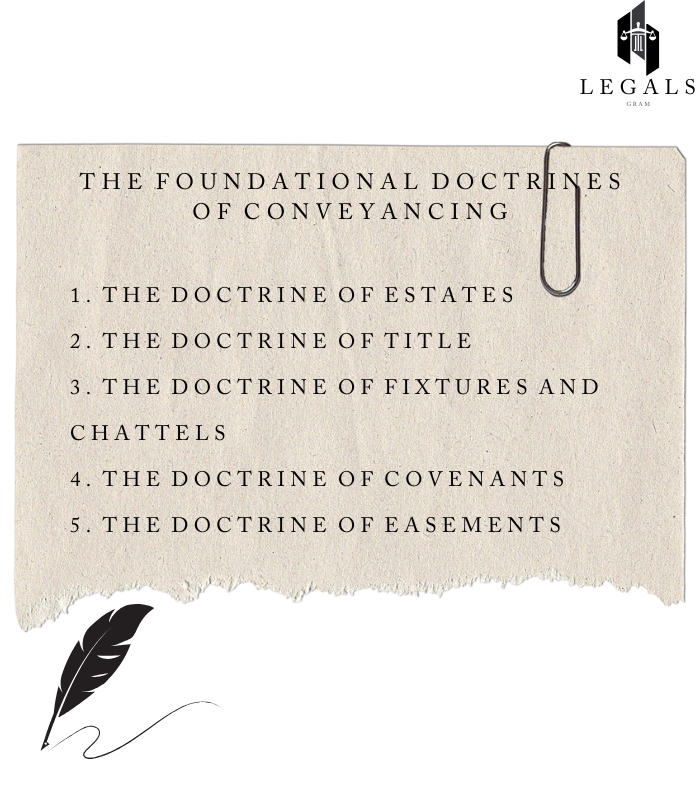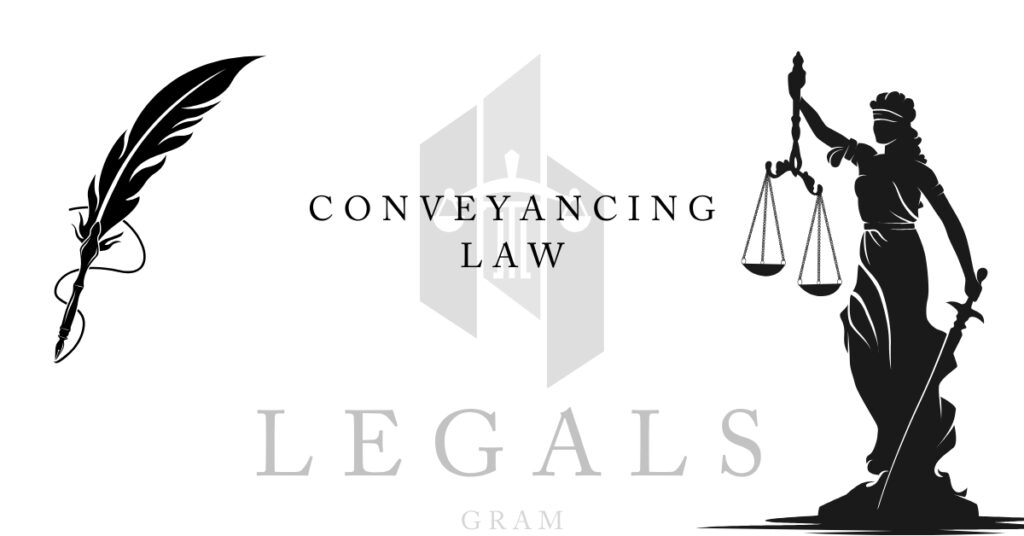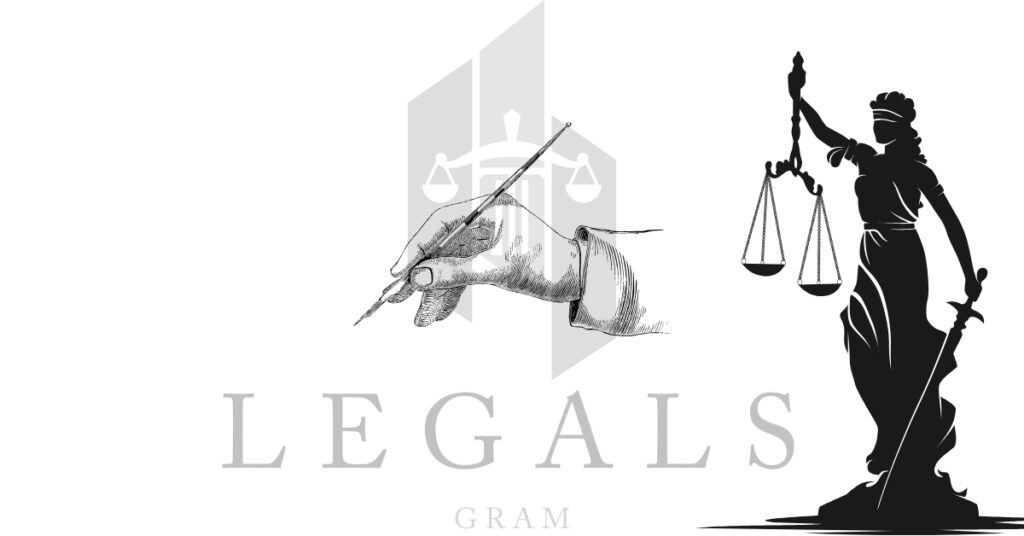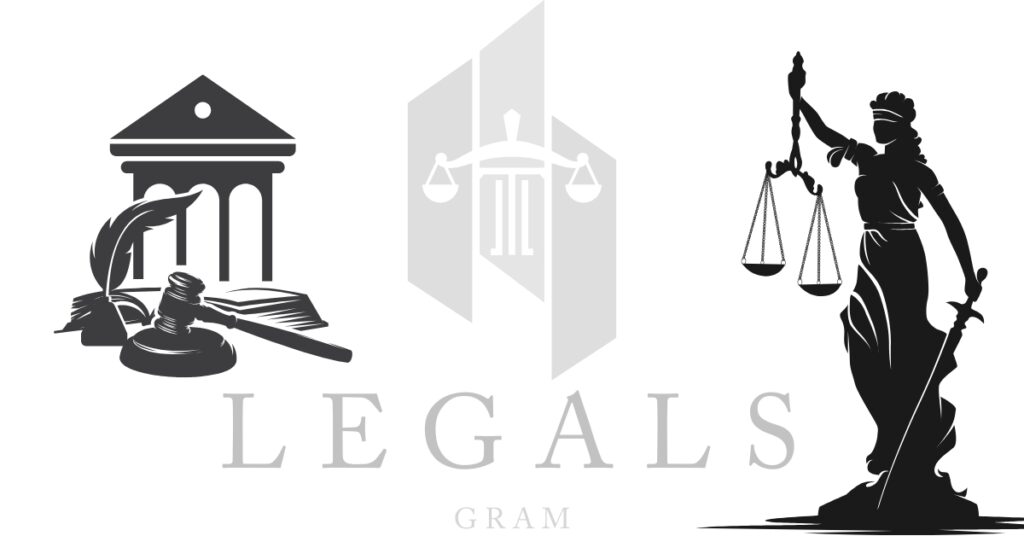One of the oldest and most well-established subfields of law is conveyancing law. Although modern conveyancing has adopted digital tools and standardized procedures, the core doctrinal principles that support efficient drafting are still crucial. This article examines how fundamental legal principles, and established doctrines should guide the drafting process to produce legally sound conveyancing documents.
Understanding the Doctrinal Approach
Creating legal documents that closely adhere to accepted legal precedents, principles, and statutory frameworks is known as a doctrinal approach to legal drafting. In contrast to mechanical template-filling, this method places a strong emphasis on legal accuracy and conformity to property law doctrine. When used in conveyancing, it guarantees that documents pass legal muster and offer the greatest level of protection to all involved parties.
The Foundational Doctrines of Conveyancing

1. The Doctrine of Estates
In many countries, property law is still mostly based on the system of estates. The exact estate being transferred has to be identified when drafting conveyancing papers. Specifying whether the transfer is of a “fee simple absolute” or a “leasehold interest” changes the whole character of the transferred rights and demands doctrinal accuracy.
2. The Doctrine of Title
Land title is the conceptual base of conveyancing. Key principles include:
- Nemo dat quod non habet (one cannot give what one does not have)
- Relativity of title: Acknowledging that multiple parties may have different interests in the same property
- Registration systems: Understanding how title registration affects drafting requirements
Conveyancing documents must reflect these principles through proper recitals, warranties, and appropriate transfer mechanisms.
3. The Doctrine of Fixtures and Chattels
The difference between chattels—movable possessions—and fixtures—attached items that become part of the property—has major consequences. Good drafting solves this by clearly defining what a fixture is, specifically including which chattels, and handling any borderline items that could be contested.
4. The Doctrine of Covenants
Covenants—promises that run with the land—require drafters to understand:
- The distinction between covenants that run with the land and personal covenants
- Requirements for enforceability (touch and concern, notice, etc.)
- Limitations such as the rule against perpetuities
These considerations must be carefully observed when drafting or incorporating covenants to ensure they will be enforceable.
5. The Doctrine of Easements
Easements—rights to use another’s land—must be drafted with attention to established legal requirements. The traditional requirements (dominant and servient tenements, accommodation, distinct ownership) must be reflected to ensure validity and effectiveness.
Doctrinal Principles in Key Documents
Contract of Sale
The contract of sale represents the meeting of contract law and property law principles. Key doctrinal considerations include:
- Ensuring the contract meets statutory writing requirements
- Distinguishing between conditions and warranties
- Properly structuring remedies in line with contractual and equitable principles
Transfer Deed
The transfer deed embodies the actual conveyance of legal title and must include:
- Appropriate words of conveyance reflecting the estate being transferred
- Precise identification of parties with the capacity to transfer and receive
- Proper documentation of consideration
- Legally sufficient property description
Mortgage Documents
Mortgage drafting requires understanding:
- The differences between legal and equitable mortgages
- Proper establishment of remedies by property law
- Priority arrangements regarding other interests
Incorporating Statute into Doctrinal Drafting
Modern conveyancing operates within a complex statutory framework that modifies common law doctrines. A doctrinal approach requires:
- Understanding how legislation has altered traditional principles
- Adhering to statutory processes for valid conveyances
- Incorporating required statutory terms and disclosures
- Addressing consumer protection laws that may override traditional doctrine
The Role of Precedent
Precedent serves a dual role in doctrinal conveyancing drafting:
- Judicial precedent: Understanding how courts have interpreted key principles
- Document precedent: Using established templates that reflect tested approaches
Drafters of precedent documents must comprehend the doctrinal foundation of each provision and modify them to meet particular jurisdictional requirements while preserving doctrinal soundness.
Practical Application of Doctrinal Drafting

Research Before Drafting
A true doctrinal approach begins with thorough research of relevant statutes, regulations, case law developments, and local land registry requirements.
Precision in Language
Doctrinal drafting demands precision, including:
- Using legal terms of art correctly
- Maintaining consistency in terminology
- Avoiding ambiguity in key provisions
- Defining terms where necessary
Comprehensive Coverage
Doctrinally sound documents address all necessary elements:
- Parties and capacity
- Subject matter of the conveyance
- Nature of the interest being transferred
- Conditions and warranties
- Covenants and restrictions
- Remedies for breach
Logical Structure
Doctrinal drafting typically follows a structure reflecting legal principles:
- Recitals establishing background
- Operative provisions executing the conveyance
- Covenants and conditions affecting the property
- Execution provisions ensuring proper authentication
Benefits of the Doctrinal Approach
Legal Certainty
The doctrinal approach optimizes legal certainty by drawing on well-established principles. When disagreements occur, documents that follow established doctrines are more likely to be interpreted consistently.
Risk Mitigation
Knowing the doctrinal foundations enables drafters to foresee possible problems and take proactive measures to resolve them, like including particular warranties or drafting covenants to make sure they run with the land.
Professional Competence
Expert conveyancers are distinguished from simple form-fillers by the doctrinal approach. It exhibits legal knowledge that satisfies professional requirements.
Challenges in Modern Doctrinal Drafting
Balancing Doctrine and Practicality
Modern conveyancing requires balancing doctrinal correctness with:
- Client expectations for readable documents
- Time and cost constraints
- Standardized approaches required by financial institutions
- Digital processing requirements
Keeping Current
Property law continues to evolve through legislation and case law. Doctrinal drafting requires ongoing education to reflect current legal principles rather than outdated doctrines.
Conclusion
In property law practice, a doctrinal approach to conveyancing drafting is considered the gold standard. Conveyors produce documents that faithfully capture the intentions of the parties, adhere to legal requirements, and stand up to scrutiny by firmly establishing legal principles as the foundation for their work.
The most successful conveyancers combine technological efficiency with in-depth doctrinal understanding to produce documents that are both practically useful and legally sound, even though modern conveyancing has streamlined many processes, yet the underlying doctrinal foundations remain essential.
These guidelines provide direction for drafting conveyancing documents that fulfill their ultimate goal—the safe, efficient, and law-abiding transfer of property interests from one party to another, whether dealing with a straightforward residential sale or a complex commercial transfer.



